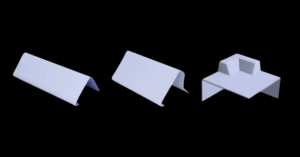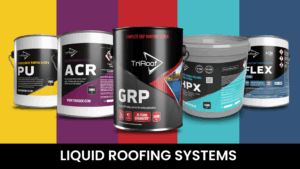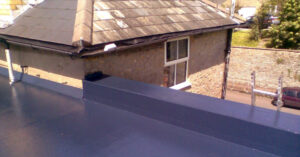
Guide to Choosing the Right Roof Trims
Boost your flat roof’s performance and appearance with the perfect GRP trims. Get expert advice and top product tips in our complete guide.
We value your privacy
Our website uses cookies to enhance your experience. By continuing to use our website, you are agreeing to our use of cookies. Necessary cookies are always enabled. You can read more about our Cookie Policy in our Privacy policy
We value your privacy
Strictly Neccessary
Essential cookies enable core website functionality, such as secure logins and preference settings, without tracking personal activities or collecting data for ads. They ensure the site's proper operation and legal compliance, remaining always active
Preferences
Preference cookies enhance your browsing by remembering settings like language and regional preferences, tailoring the site to your needs without tracking activity across other websites
Statistical
Statistics cookies gather anonymous data on site interactions and page visits to help improve functionality, ensuring a smoother user experience without personally identifying users
Marketing
Marketing cookies are used to identify visitors across different websites, such as those operated by content partners or ad networks. These cookies allow companies to build a profile of a visitor’s interests and preferences, enabling the delivery of personalized ads that are relevant and engaging on other websites.
Cookies are small text files stored on your computer by websites you visit. They help users navigate websites efficiently and enable certain essential functions.
Cookies necessary for the website to function properly can be set without your consent, while all other cookies require your approval before being used in your browser.
Additionally, we use cookies to gather data for personalizing and evaluating the effectiveness of our advertising.
For more information, please refer to the Google Privacy Policy.
You can find the list of all the cookies that we use on our website here.
Installing a Fibreglass Roof

Glass Reinforced Plastic, also known as GRP, is a strong, lightweight, corrosion and temperature resistant material. It is easily moulded for complex shapes and structures. It can be also extremely cost effective compared to traditional building materials. These properties make it an ideal material for installing a fibreglass roof on both residential and commercial buildings.
GRP consists of thermosetting resins and glass fibres which when bonded together result in a solid fibreglass material.
GRP has been used in the UK and Ireland since the 1940’s. Its primary stronghold began in the marine industry for boat building. Once its high strength, versatility and appearance properties were recognised it was soon in demand across a variety of industries including automotive, construction, water tank building and flat roofing. Today, installing a fibreglass roof is a common application due to its durability and long-lasting performance.
A GRP Roofing system is a lightweight, single-ply membrane which is applied to secured OSB 3 decking boards. Its core materials consist of Resin, Fibreglass Matting and Topcoat. When installing a fibreglass roof, ensuring these materials are correctly applied is crucial to achieving a long-lasting, waterproof finish.
Once applied correctly, a GRP Roof will last in excess of 20 years. Once cured fibreglass is inert and it will not rot or corrode. This means little maintenance is required on this type of roofing system.
A GRP Roof can be used for both domestic and commercial applications.
It is important to inspect the existing substrates before proceeding. If replacing an existing roof, ensure the existing boards and joists are free from rot.
We recommend using 18mm OSB3 Decking Boards, laid at 90 degrees to the roofing joists. The boards should be laid with the writing side facing upwards to allow a better key for the lamination. This will also allow the resin to flow into the board joints to effectively glue the boards together.
Start laying the boards from the furthest edge from the drip. If laying boards against a wall, a gap of 25mm should be left between the boards and the wall to allow expansion.
The end of the board should be aligned with the fascia and the last board should be trimmed so it is flush with the fascia.
If the cut off is greater than 400mm, use this to start laying the next row of boards by fitting the tongue into the groove of the boards already laid. The boards will be staggered and bonded by the time you have finished resulting in a strong deck.
After two rows have been laid, align the boards to run straight. The last row can be cut off in line with the fascia.
The boards should be fixed to the timber joists using a compressed air or gas nail gun. Any nails used should be galvanised or sheradised as they will not rust.
63mm galvanised nails should be used at 200mm centres across the boards. This will usually be 4 nails across a 600mm board. Ensure all nails are driven into a joist.
The boards may also be nailed with a hammer, although this will take more time. Care must be taken to avoid any internal damage to the ceiling below.
Edge Trims are manufactured from GRP. One side of the trim will have a matt finish for high adhesion and the other side will be glossy.
Most trims are fixed to the decking board with 13mm galvanised nails or staples. The exception to this is the application of the F300 Flat Flashing and D260 Fillet Trim. These should be fixed with a PU Adhesive.
Before any resin is applied, the fibreglass material should be cut to suit the repair area including any extra pieces needed for corners.
Glass bandage should be used to line the joints and the fibreglass chopped strand matting will be applied to the rest of the roofing area.
The matting should be applied parallel to the drip trim, 1m at a time. It should overlap the trim by 50mm without going over the edge of the trim.
Remove any uneven ends with a Stanley knife.
The resin container should be shaken before use. This will ensure that any styrene or wax settlement at the bottom have been mixed in.
Ideally, the resin should be mixed in batches of 2kg at a time with 2% (40ml) catalyst. At room temperature, this will give a working time of 20 minutes before the resin starts to cure/harden.
The joints and corners of the roof should be applied first.
Taking a brush, generously apply the resin to the joints where the bandage will be placed. Apply the bandage and add more resin on top, working with the brush until it is completely saturated. Take a roller and consolidate the resin ensuring there are no dry patches remaining.
The same principles apply when adding the glass matting to the corners of the roof. Apply the resin to the corner and wrap the glass around it. Cut slits in the side of the glass to help the glass fit into place. Apply more resin to the mat and consolidate with a roller.
When working with the Larger Pieces of Glass, Take the pre-cut matting, roll it out to double-check it will be applied in a straight line and then roll it back.
When applying the resin we like to work to a ratio of 3:1. We recommend one-third of the resin should be primarily applied to the board and two thirds on to the mat.
Follow the resin application with the paddle roller to remove any air pockets. By the end of the laminating process, the glass should be transparent.
This is the final stage of the Fibreglass Roofing process.
Before applying the Topcoat, use 40 grit sandpaper sand the corners and bandages. Any excess cured mat which may be protruding may be removed with a Stanley knife. Special care must be given to the corners to avoid any holes appearing.
If you are applying any C100 Simulated Lead Trims, they may be applied at this time prior to topcoating.
Once the glass has semi-cured, the Topcoat can be applied. If possible, it should ideally be done within 24 hours.
Shake the topcoat well before opening. The Topcoat is mixed with catalyst usually at 2%, similar to the resin process outlined above.

Boost your flat roof’s performance and appearance with the perfect GRP trims. Get expert advice and top product tips in our complete guide.

Roofing resins like Original GRP, HPX, MultiFlex, Polyurethane, and Acrylic offer unique benefits for residential and commercial properties. Learn about the advantages, applications, and features of each resin type to choose the best option for your roofing needs.

Upgrade your roof with quality materials for lasting performance and appeal. Explore the advantages of fibreglass kits. Read the full article now.

Fibreglass Roof Kits are becoming a top choice for homeowners seeking a durable, energy-efficient, and low-maintenance roofing solution. In this post, we explore the key benefits of fibreglass roofing, from easy installation and sleek aesthetics to long-term cost savings and